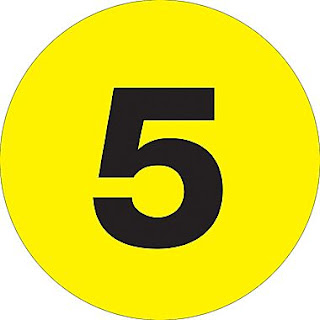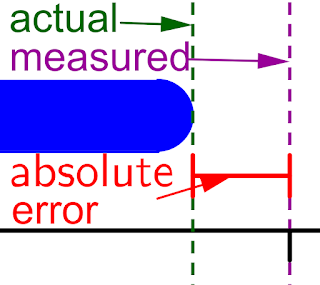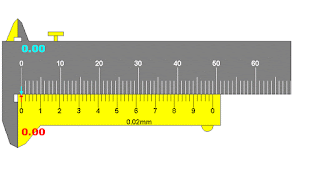Overview Error of Measuring
When observing or measuring something, it's very common if there is an error measuring. It can happened because of the influence of internal factor or external factor. Internal factor is factor comes from the observer. In addition external factor is factor comes from outside the observer. Besides, even though they way of reading and measuring tool used are the same, the reading result between one student and other can be different.
When you are measuring a certain tool, you want the most thorough measurement result. Some factors influences the measurement result are the position when you are reading the scale, ability of tool, the technique of the using tool and other influencing environments factors, for example temperature and air pressure.
The best position of reading the scale is perpendicular. On the contrary, reading with the position of eyes leaning to the scale or the showing pin will cause the error reading. The mistake mentioned above is the measurement which bigger or smaller than the real measure. The mistake caused by incorrect scale reading is called parallax error.
5 Aspect of Measurement
In using measuring tool, you have to understand the characteristic of the tool. This objective is mean that you can obtain the perfect measurement result. There are any aspect that people attention needed in measurement, they are accuracy aspect, precision aspect, sensitivity aspect, mathematic aspect that need calibration, and random errors.
1. Accuracy
One day you are measuring a width of a table of tennis table. To obtain the accurate measurement, you need to measure repeatedly. Based on the measurement result, you will find some different scale reading although in small scale. If all the measurement result the more some value, whereas other value have a little different with the value, it means that you measurement have good accuracy.
2. Precision
The precision of measurement result have the close relationship with the tool you use. The precision is defined as the equation between result and the real size. The real size is a result which is considered as the correct measure based on thee reality. Therefore, in measuring something the closer you result to the real size, it means that your tools you use have the better accuracy.
However, if there is different between measurement result and the real size, it is caused by factors of tool, including systematic mistakes.
3. Sensitivity
One day, you had a task from physics teacher to measure the mass of a chalk. You were given two pair of scales, A and B. For example, based on pair of scale A, you obtained 10 grams, whereas using B, you obtained 10,2 grams. It means that B had the better sensitivity than A. Sensitivity is measurement of relative ability of a tool compared with the similar other tool.
4. Mathematics Error
In an experiment or observation, the tools those are used can give you the fake measurement result. It might be happened since the weakness of the tool or the shift or the zero position leveling on the tool. The mistake caused by the shift or the movement or the zero position on the tool are called mathemtics mistake. Therefore, before using the tool, you need to reset the zero position of the leveling.
5. Random Errors
If you are measuring resistance of the resistor using an old multimeter, of course the result is not appropriate with the real size. Don't you realize that before ? This kind of measuring mistake is called random error. Random error is a mistake that happen incidentally and we cannot figure it out immidiately, for example
- Fluctuation of the voltage (up and down) can damage the electricity tool
- Background radiation
- Vibrations around the measurement site
- Other disturbance un predicted before
Beside the above mistake, there are also mistake caused by limited ability and skill of the observer. Since there are many source that cannot be overcome, thing that might be done by observer is minimizing those mistakes.











